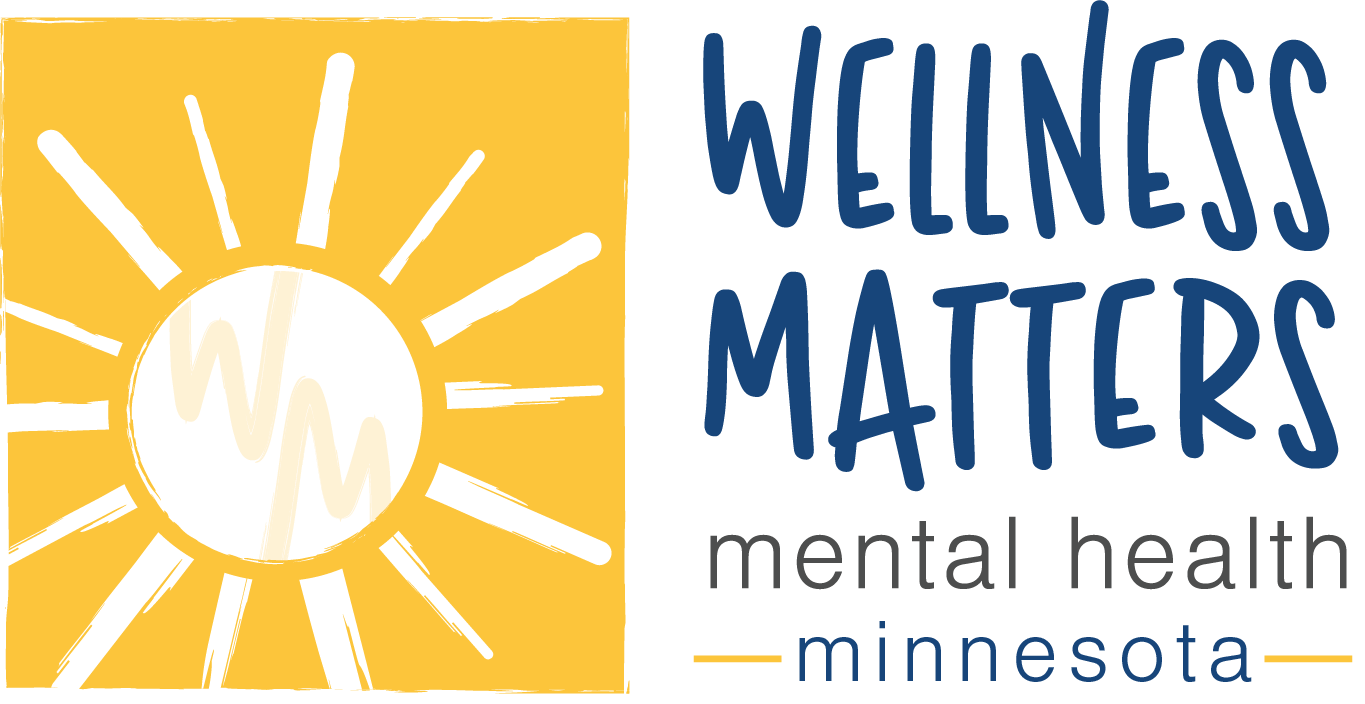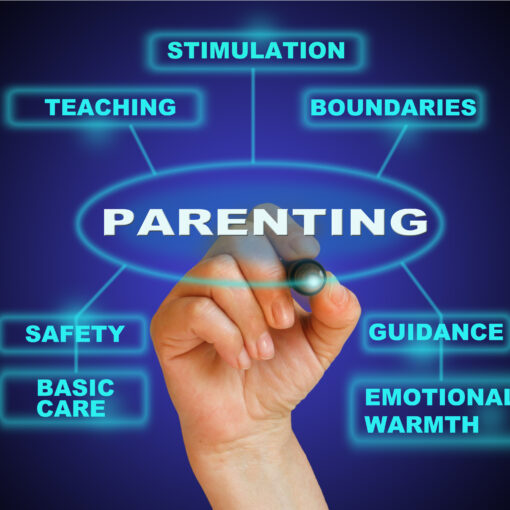By Emily Pierson, MEd, LCPC, LPC
Are your child’s tantrums wearing you out?
Are you a parent to a toddler or preschooler? Are the “terrible twos” driving you crazy? Is your little one beginning to have more meltdowns? Do you feel like you’ve tried everything? Are you wondering if there is something else you could do to help them? If so, the answer may be ‘yes’.
Has anyone really ever calmed down just because they were told to? Probably not, especially if that person is a child. It isn’t a secret that raising children is hard. Research has yet to determine a “best way” to raise children. However, recent studies have shown that there are things adults can do to help children calm down in a moment of heightened emotions.
The “Three Rs” is a framework for helping a child self calm
The 3 R’s concept was created by Dr. Bruce Perry (2) as an effective method for helping little ones work through big emotions. When a child is in a state of distress, it becomes difficult to think clearly or process emotions (1). This is true no matter what age the person is. The younger the child is, the more difficult it is. There is hope! Adding the 3 R’s to your parenting tool box can aid child’s success in kindergarten, elementary school, and beyond.
A Basic Brain Breakdown
 When a child, or any person, is in a state of heightened distress, it is difficult to process information. Think about the last time you were extremely stressed. Did it feel as though you couldn’t focus on anything? Were you struggling to accomplish tasks? When we are calm and relaxed, we are operating in our “higher brain”. This part of the brain allows us to process to think, to learn, and problem solve.
When a child, or any person, is in a state of heightened distress, it is difficult to process information. Think about the last time you were extremely stressed. Did it feel as though you couldn’t focus on anything? Were you struggling to accomplish tasks? When we are calm and relaxed, we are operating in our “higher brain”. This part of the brain allows us to process to think, to learn, and problem solve.
When a person becomes threatened, stressed, or otherwise dysregulated, we retreat into our “lower brain” (3). This is the area of our brain, known as the brainstem, partially controls the fight or flight reflex as well as our emotional responses (4). It also ‘remembers’ our emotional responses to trauma, which in turn helps us to assess for danger (4). Transitioning from the bottom brain to the upper brain can get harder the more dysregulated a person is. We have to learn to “calm” our bottom brain so we can “think” in our upper brain.
When a child is calm, they can think, process information and learn (3). In this state, they do not feel threatened and typically aren’t experiencing stressful stimuli.
Now imagine that you are three years old and don’t know how to process or communicate emotions yet. How would you respond to your parent telling you to “calm down” or “stop crying”? When a child starts to experience stress, fear, or terror, they behave reactively or by reflex (3). In other words, a fight or flight reflex kicks in, and they have difficulty communicating their needs or listening. Here is an example:
- Three-year-old Sasha is at the store with her mother. She sees a toy that she wants and asks her mother to buy it for her. Her mother tells her ‘No, not today’. Sasha starts to cry and become upset. Her mother continues to tell her no and tells her to calm down. Sasha escalates and begins to scream and fall on the floor sobbing, struggling to breathe. They eventually have to leave the store.
Does this scenario sound familiar? Do you feel helpless when your little one becomes so upset that they can’t settle down? This is not an uncommon feeling amongst parents. All you want is for your kiddo to be able to “control” (or regulate) themselves. The big question is, how do you help them without getting into a power struggle?
The 3 Rs
Sometimes, when a person is distressed or in a vulnerable state, it is difficult to calm down by themselves. Dr. Bruce Perry defined a three-step framework to help return a person to a calm state after becoming stressed. He coined this process “The 3 Rs”: regulate, relate and reason.
REGULATE:
Our bodies tell us when we begin to become dysregulated (5). Think of a newborn baby. When they are hungry, they cry. When they are startled by a loud noise, it takes them a moment to calm down. As we grow older, our needs extend beyond food, water and shelter. What do we do when we feel threatened, anxious, fearful, or upset? Remember Sasha from the example above? She became so agitated and upset, that she began to have difficulty breathing and struggled to talk. She entered into a state of dysregulation. She had difficulty focusing and controlling her body. Sasha needs to learn how to self-regulate (e.g., self-calm).
As adults, we have opportunities to help teach children to self-regulate. Our first instinct may be to get into a power struggle with a child. However, how helpful is it to argue with a three-year-old? Not very. Here are some other ideas to try to help co-regulate with a young child and bring them back to a state they can think in (2, 5, 6):
- Use limited, soothing language
- Remain calm yourself
- Model self-control
- Provide comfort (touch, blanket, toy)
- Focus on breathing
- Make sure their basic needs are met (food, water, shelter)
- Create a safety with a trusted adult
To continue with the example above, Sasha’s mother may help her calm down by staying calm herself. She could encourage Sasha to focus on her breathing and modeling that you are with her while she has her “big emotions”. (Becoming dysregulated ourselves and yelling at our child to “calm down” only adds fuel to the fire.)
Teaching a child to self-calm starts in infancy and continues throughout childhood. “Co-regulation” is coaching a child to down-regulate heightened emotions. It is accomplished by a warm and responsive interaction with a parent or caregiver. A quick google search of “how to help young children calm down” provides even more practical ideas.
RELATE:
Once a child is able to maintain a calmer state, then we can move on to Dr. Perry’s second ‘R’: Relate. We know a child has become more regulated by steadier breathing, less crying, and appearing calmer. This is when we can start to relate to a child.
Think about a time when you were very upset and were able to calm down. Was it helpful to have someone relate to you and validate your feelings? The same is true for young children as well. After a child has calmed down from their dysregulated state, it is helpful to relate to or connect with them (2, 6, 7). This helps the child feel safe and protected. It also helps maintain the state of calmness. Here are a few ideas for relating to a small child (6, 7):
- Identify how they were feeling (angry, frustrated, sad, scared, upset, etc.)
- Validate that the feelings they were experiencing may have been hard, scary, etc.
- Set a healthy example for staying calm and verbalizing feelings
- Reassure them that they are safe
- Remind them that you are there to help
- Continue to maintain your own calmness
- Share your own experiences (i.e., “I get really angry when…)
- Normalize their emotions
Sticking to the example above, once Sasha is calm, her mother could continue to help by relating to her. She may say something like: “I know it’s hard when mommy says ‘no’”; or “I can see that you were upset when we didn’t buy what you wanted”. Or she could validate and normalize her daughter’s feelings: “I get sad sometimes when I don’t buy something that I want”. In situations where the child is startled, scared, or hurt, reassure that she is safe.
REASON:
The final step to “reason” is done AFTER the child has returned to a normal emotional state and have a connection has been made with the child. Only after regulating and relating will a child be ready and able to discuss what happened and focus on their feelings. This is the stage at which you can problem solve, have a teaching moment, or discuss cause and effect of a situation. Here are some examples for how you can reason with a child (6, 7):
- Teach feeling words
- Discuss and practice self-regulation techniques (i.e., deep breathing, coping skills) for use during the next time the child becomes dysregulated
- Identify things the child can and cannot control
- Support the child in learning
- Talk about cause and effect of the child’s actions if applicable
- Help the child learn about their stress responses
- Acknowledge the good and use praise for calming down
Let’s revisit Sasha one last time. When Sasha is in a calmer state and feels connected, her mother can begin to reason with her. They may discuss why she had the reaction she did and make a plan for the next time they come to the store. Mom can teach Sasha coping skills such as breathing exercises. Her mother could also praise her for being able to calm herself down.
The 3 Rs are a helpful framework for assisting children to self-calm in stressful situations. Just like with any skill, learning to self-calm will take practice. Teaching a child this skill will help them to respond to stressful situations. Being able to “calm down” will be a valuable skills for kindergarten, elementary school and beyond,
—————————————————————————————————————————————————————-

Emily offers a holistic approach to mental health and wellness. In addition to prioritizing mental well-being, she uses a strengths-based perspective to improve relationships and physical health. She is passionate about helping teens and adults set and meet realistic, achievable goals, while also meeting them where they are in their journey.
Emily was born and raised in Alaska, where she received her master’s degree in counseling from the University of Alaska Fairbanks.
After moving to the “Lower 48”, she has been working as a therapist for the past four years.
Emily has immediate telehealth appointment openings available through Wellness Matters LLC.
Read more about Emily and other Mental Health Therapists in the “About Us” tab.
Resources/References
1. The 3 Rs of Improving Brain States. Retrieved from: https://lakesidelink.com/blog/lakeside/the-3-rs-of-improving-brain-states/. Accessed December 6, 2021.
2. Regulate > Relate > Reason: Mind-Body Strategies for Navigating Stress. KJ Consulting Group. Retrieved from: https://www.kjconsultinggroup.com/blog/regulate-gt-relate-gt-reason-mind-body-strategies-for-navigating-stress. Accessed December 6, 2021.
3. Children’s Levels of Cognition. Retrieved from: https://lakesidelink.com/blog/lakeside/childrens-levels-of-cognition/. Accessed December 6, 2021.
4. Brain Insights and Well-Being. Psychology Today. Retrieved from: https://www.psychologytoday.com/us/blog/inspire-rewire/201501/brain-insights-and-well-being. Accessed December 7, 2021.
5. Self-Regulation: The second Core Strength. Retrieved from: http://teacher.scholastic.com/professional/bruceperry/self_regulation.htm. Accessed December 7, 2021.
6. The 3 Rs: reaching the Learning Brain (Handout). Org. Retrieved from: https://wvpbis.org/wp-content/uploads/Effective-Responses-to-Trauma.pdf. Accessed December 7, 2021.
7. The Response to Stress Information for School Staff (Handout). An Roinn Oideachais: Department of Education. Retrieved from: https://assets.gov.ie/85413/f4b31f00-2d5d-4ee1-bb0d-2ff635fa142f.pdf. Accessed December 7, 2021.


